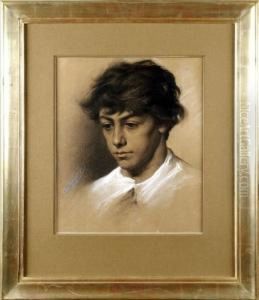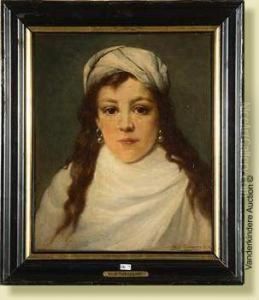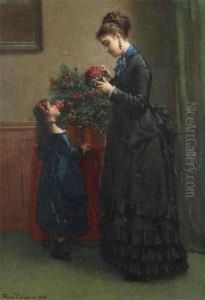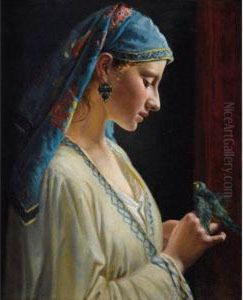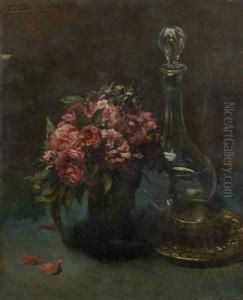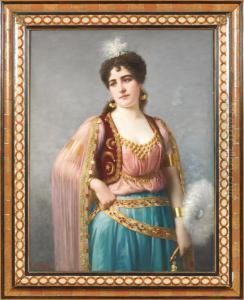Frederic Tschaggeny Paintings
Frederic Tschaggeny was a Belgian painter born in 1815 in Brussels, Belgium. He emerged as a significant figure in the 19th-century European art scene, primarily known for his landscapes and animal paintings. Tschaggeny was part of a family with artistic inclinations; his brother, Charles Tschaggeny, was also a painter, indicating a nurturing environment for artistic development.
Frederic Tschaggeny's work is characterized by its meticulous attention to detail and the vibrant portrayal of the natural world. He had a particular affinity for depicting rural scenes, livestock, and pastoral landscapes, which he imbued with a sense of realism and emotional depth. His paintings often reflect the tranquility and beauty of the countryside, capturing the changing seasons and the daily lives of rural folk with accuracy and empathy.
Throughout his career, Tschaggeny enjoyed considerable success and recognition. His works were exhibited in various important exhibitions across Europe, garnering acclaim for their technical skill and expressive quality. Despite this, he remains a somewhat lesser-known figure outside of Belgian art historical circles, overshadowed by his contemporaries in the Romantic and Realist movements that dominated European art at the time.
Tschaggeny's legacy is preserved through his contributions to Belgian art and the broader landscape genre. His paintings can be found in several museums and private collections, where they continue to be appreciated for their beauty and historical value. Frederic Tschaggeny passed away in 1879, leaving behind a body of work that continues to inspire and captivate audiences with its depiction of the natural world and rural life.
